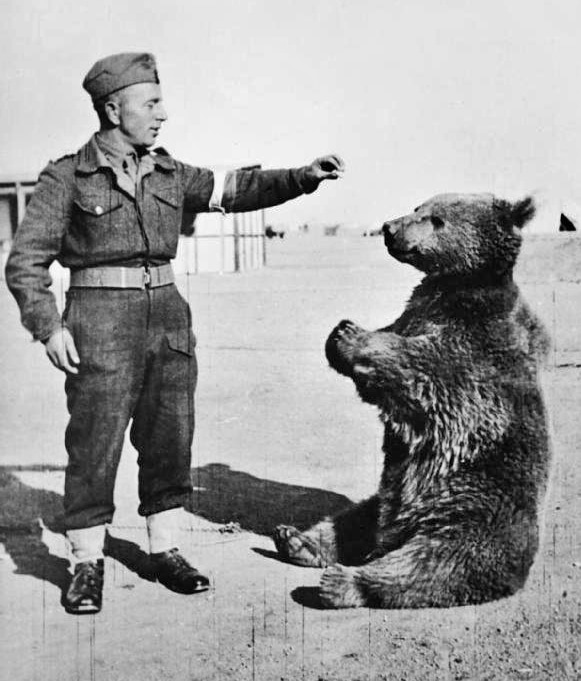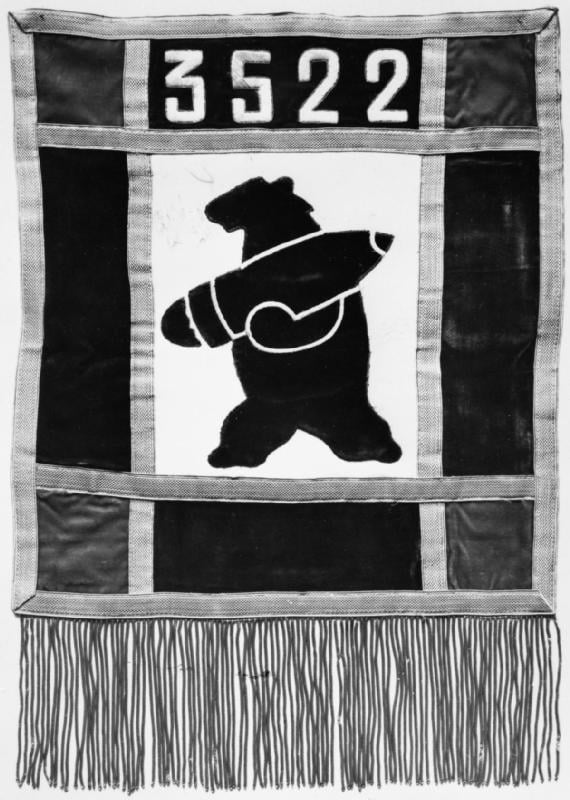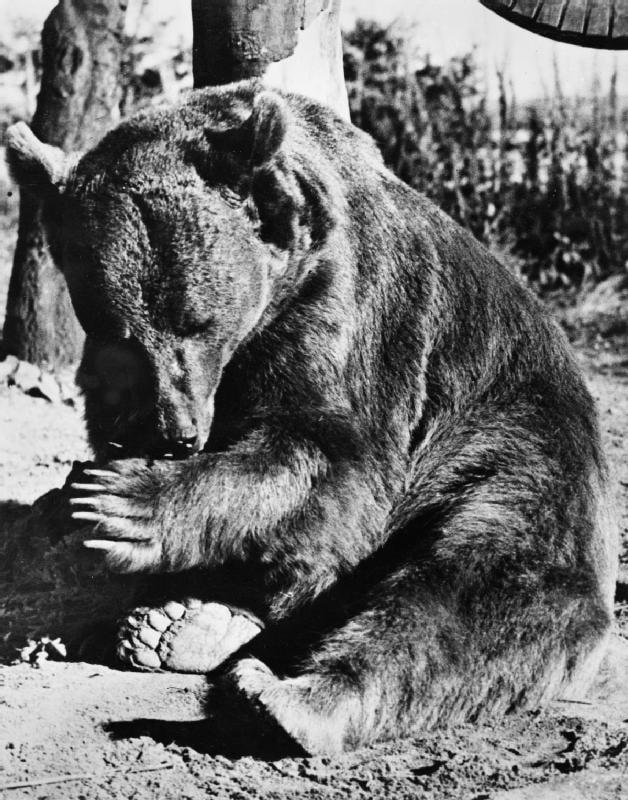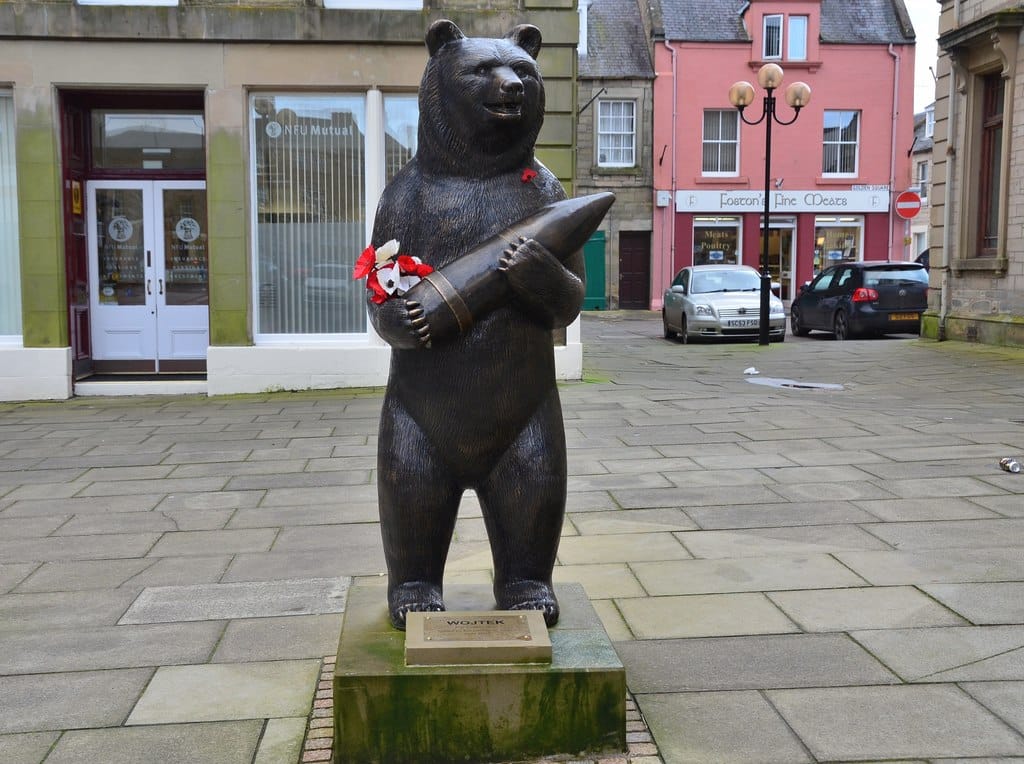Last updated on July 21st, 2022 at 09:12 pm
In the spring of 1944, the Western Allies undertook one of the most crucial campaigns on the Southern Front of the Second World War in Europe.
This was the Battle of Monte Cassino, in which the Allies sought to break through the German and Italian line in Central Italy and open a pathway to seizing the city of Rome.
The abbey of Monte Cassino was central to this action. It took four months from January 1944 onwards for repeated attacks on this hilltop stronghold to succeed as the Polish II Corps broke through the Axis lines mid-May.
On the 18th of May, a Polish flag and a British Union Jack were raised above the abbey. But what might have struck combatants as most peculiar during this lengthy engagement was not the presence of a large Polish division in southern Europe or the sustained campaign to secure a relatively unimportant religious abbey.
Instead, one of the ‘soldiers’ fighting with the Poles was a giant brown bear. This bear was Private Wojtek of the 22nd Artillery Supply Company.
Private Worjtek’s Service During the Second World War
Private Wojtek was a giant brown Syrian bear. His story begins in Poland early in 1942 when Wladyslaw Anders, a Polish resistance fighter, formed a new military unit to combat the occupying Germans.
As little could be done to attack the Germans directly in Poland in 1942, the Allied command agreed with Anders that he would lead his men through Russia into the Middle East.
From there, he would proceed to North Africa to aid the Allied campaign against Erwin Rommel’s Afrika Korps and the Italian forces stationed in Tunisia and Libya.
On their way, Anders’ Army, which would eventually make up the bulk of the Polish II Corps and the 22nd Artillery Supply Company, came across a young Iranian boy in the Middle East.

The boy had a bear cub whose mother had been shot by some hunters. The Poles were enamored with the bear cub and agreed to look after it. He was soon assigned to the 2nd Transport Company, which later became the 22nd Artillery Supply Company.
The troops here named the bear Wojtek, meaning ‘Happy Warrior’, because of his friendly disposition. He set off through Palestine and into Egypt with the Poles to fight the Axis powers in North Africa.
They served alongside the bear for the next two years, with Wojtek acclimatized to humans and the Poles considering him a mascot. He even began to help them carry their equipment and was believed to have brought ammunition to the troops, though it is unclear if this is true or a legend that emerged after the war.
Following the Allied victory in North Africa in the early summer of 1943, the Poles gained a period of much-needed rest. Still, early in 1944, they were redeployed to Italy for the push against the Axis troops in the north and center of the country.
When the Polish II Corps arrived in Naples that spring, Allied commanders such as Archibald Brown were astonished to see a big brown bear in their midst.
By this time, Wojtek was no longer a cub. He stood over six feet tall and weighed over 220 kgs. Moreover, the Poles had taught him to drag sleds of heavy mortar shells.
Allied soldiers throughout the Battle of Monte Cassino were astonished to see a bear walking through their lines carrying mortar shells to the front. The 22nd Artillery Supply Company even had their unit’s emblem changed to that of a bear carrying some mortars.

By the time the Italian campaign drew to a close in 1945, Private Wojtek was a legend of the Southern Front, one who was believed to be fond of consuming beer and cigarettes, which his Polish comrades provided him with. However, it should be noted that he ate the cigarettes rather than having learned actually to smoke them!
Life After the War
In the aftermath of the Second World War, Private Wojtek retired from active duty. Perhaps somewhat surprisingly, he was not sent back to Poland to live amongst the people who he had generally served with during the war.
He headed to Britain, as the 22nd Artillery Supply Company had been re-stationed in Scotland in the immediate aftermath of the Second World War as the fate of Poland in the post-war world order was being determined.
While stationed there in Berwickshire, the locals took to the bear, which had lived such a colorful early life. As a result, when the Polish forces stationed in Britain were finally fully demobilized in late 1947, Wojtek was invited to come and live at Edinburgh Zoo in the Scottish capital.

The Polish troops who had spent most of the last decade with him agreed that he should stay in Scotland as they did not wish for him to be used for propaganda by the new Communist regime back in Poland.
Consequently, Wojtek spent the next sixteen years living in Scotland, often visited by Polish veterans who would give him cigarettes and beer.
He also became a regular feature on episodes of the British Broadcasting Corporation’s show Blue Peter. Unfortunately, Wojtek died in his twenty-first year on the 2nd of December 1963.
Wojtek’s Legacy and Depictions in Popular Culture
Wojtek continues to be remembered today. In 2011 a feature film telling the story of the bear entitled Wojtek: The Bear that Went to War was released.
This drew renewed attention to his life and service, and in 2015 a statue of him was unveiled in Edinburgh, the city where he lived so much of his life after the war.

Two years earlier, another statue of Wojtek had been unveiled in the city of Krakow in Poland. Several other monuments have followed, while street names have also been rechristened after the bear. Finally, in May 2019, a marble statue of the most unusual combatant at the Battle of Monte Cassino was unveiled at Cassino in Italy.

